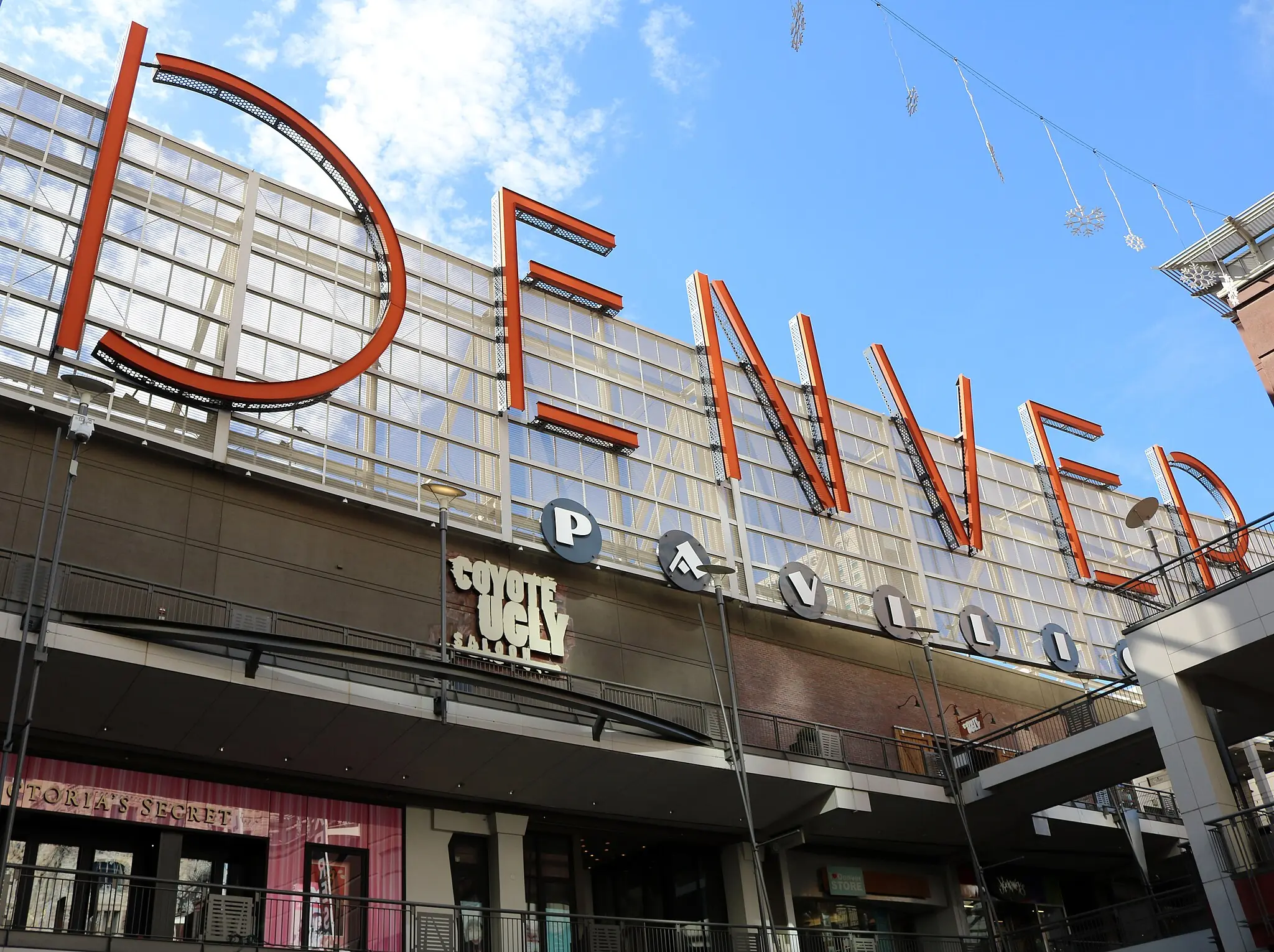Denver’s downtown revitalization efforts are accelerating following the city’s $37 million acquisition of the Denver Entertainment and Fashion Pavilions (Denver Pavilions).
The Denver Downtown Development Authority (DDDA) approved the $37 million purchase in late September, allocating up to $8 million for initial improvements and pre-development work. The acquisition was financed through local tax increment financing (TIF) made possible by Measure 6A, approved by voters in 2024. That measure enabled the city to access an additional $570 million in future TIF revenue for downtown investment without raising taxes or affecting the general fund.
Originally opened in 1998, the Pavilions was a $106 million mixed-use development combining retail, dining, and entertainment, along with two underground garages providing more than 800 parking spaces. Once a central hub for activity, the property — like many urban retail centers — experienced steep occupancy declines after the pandemic.
Officials said the redevelopment aligns with Denver’s goal of transforming 16th Street into a walkable, mixed-use district centered on community engagement and year-round activity. Early plans emphasize coordinated parking management, infrastructure modernization and activation of vacant storefronts. Denver officials anticipate releasing project timelines and partnership opportunities as planning advances.
The purchase comes alongside another major milestone: the grand reopening of the 16th Street Mall. Completed after more than a decade of planning and three and a half years of construction, the $176.7 million renovation revitalized 13 blocks of downtown. The redesign supports the Denver’s broader “destination corridor” strategy, promoting both economic development and civic engagement. New public amenities enhance pedestrian comfort, while updated lighting and security upgrades improve accessibility and safety, according to officials.
The corridor’s renewed success could accelerate future redevelopment of the Denver Pavilions site, which project leaders envision as a hub integrating entertainment, hospitality and flexible commercial space within the existing retail footprint. As the DDDA finalizes design concepts and evaluates partnership options, additional details on costs, timelines and developer engagement will be released in upcoming updates.
Denver’s strategy to improve the mixed-use district highlights how cities are using tools such as TIF to reactivate central business districts — turning underperforming assets into catalysts for long-term urban vitality.
Photo by Jeffrey Beall, CC BY 4.0 https://creativecommons.org/licenses/by/4.0, from Wikimedia Commons







